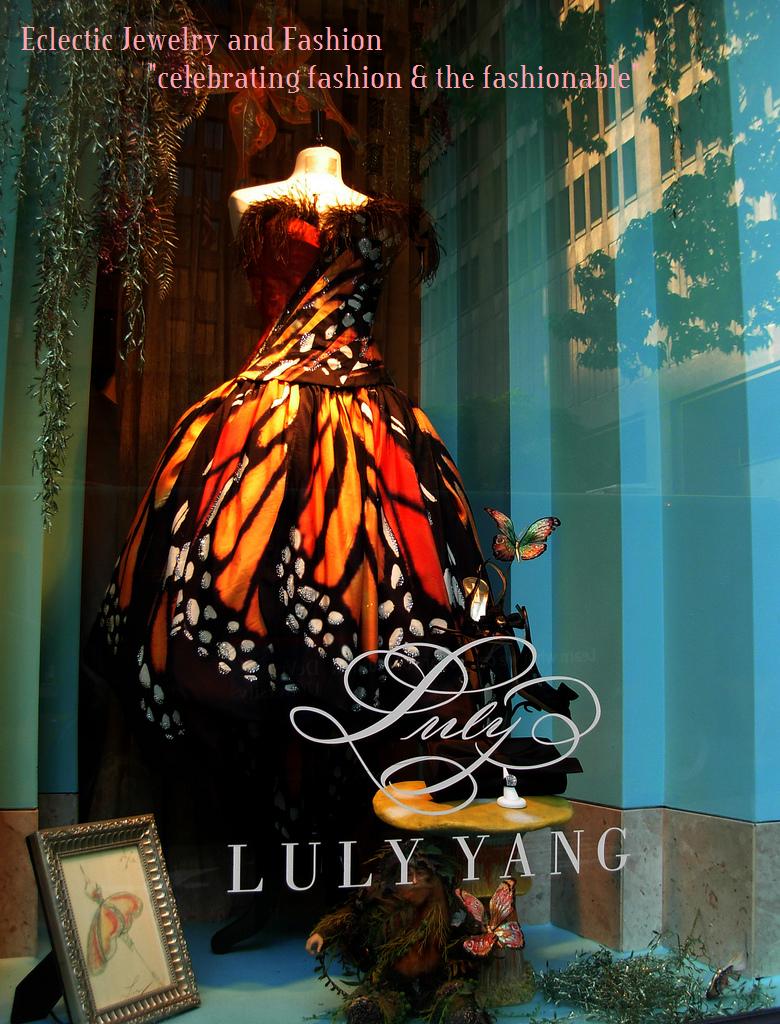



















Madeleine Vionnet (June 22, 1876 - March 2,1975) was a French fashion designer. Called the "Queen of the bias cut" and "the architect among dressmakers", Vionnet is best-known today for her elegant Grecian-style dresses and for introducing the bias cut to the fashion world.
Vionnet began her apprenticeship as a seamstress at age 11. After a brief marriage at age 18, she left her husband and went to London to work as a hospital seamstress. Vionnet eventually returned to Paris and trained with the well known fashion house Callot Soeurs and later with Jacques Doucet. In 1912 she founded her own fashion house, "Vionnet". In the 1920s Vionnet created a stir by introducing the bias cut, a technique for cutting cloth diagonal to the grain of the fabric enabling it to cling to the body while moving with the wearer. Vionnet's use of the bias cut to create a sleek, flattering, body-skimming look would help revolutionize women's clothing and carry her to the top of the fashion world.
Madeleine Vionnet believed that "when a woman smiles, then her dress should smile too." Eschewing corsets, padding, stiffening, and anything that distorted the natural curves of a woman's body, her clothes were famous for accentuating the natural female form. Influenced by the modern dances of Isadora Duncan, Vionnet created designs that showed off a women's natural shape. Like Duncan, Vionnet was inspired by ancient Greek art, in which garments appear to float freely around the body rather than distort or mold its shape. As an expert couturier, Vionnet knew that textiles cut on the diagonal or bias could be draped to match the curves of a woman's body and echo its fluidity of motion. She used this "bias cut" to promote the potential for expression and motion, integrating comfort and movement as well as form into her designs.
Vionnet's apparently simple styles involved a lengthy preparation process, including cutting, draping, and pinning fabric designs on to miniature dolls, before recreating them in chiffon, silk, or Moroccan crepe on life-size models. Vionnet used materials such as crêpe de chine, gabardine, and satin to make her clothes; fabrics that were unusual in women's fashion of the 1920s and 30s. She would order fabrics two yards wider than necessary in order to accommodate draping, creating clothes - particularly dresses - that were luxurious and sensual but also simple and modern. Characteristic Vionnet styles that clung to and moved with the wearer included the handkerchief dress, cowl neck, and halter top.
An intensely private individual, Vionnet avoided public displays and mundane frivolities and often expressed a dislike for the world of fashion, stating: "Insofar as one can talk of a Vionnet school, it comes mostly from my having been an enemy of fashion. There is something superficial and volatile about the seasonal and elusive whims of fashion which offends my sense of beauty." Vionnet was not concerned with being the "designer of the moment", preferring to remain true to her own vision of female beauty.
With her bias cut clothes, Vionnet dominated haute couture in the 1930s setting trends with her sensual gowns worn by such stars as Marlene Dietrich, Katharine Hepburn and Greta Garbo. Vionnet's vision of the female form revolutionized modern clothing and the success of her unique cuts assured her reputation. She fought for copyright laws in fashion and employed what were considered revolutionary labor practices at the time - paid holidays and maternity leave, day-care, a dining hall, a resident doctor and dentist. Although the onset of World War II forced her to close her fashion house in 1939, Vionnet acted as a mentor to later designers, passing on her principles of elegance, movement, architectural form, and timeless style.
Today, Madeleine Vionnet is considered one of the most influential fashion designers of the 20th century. Both her bias cut and her urbanely sensual approach to couture remain a strong and pervasive influence on contemporary fashion as evidenced by the collections of such past and present-day designers as Ossie Clark, Halston, John Galliano, Comme des Garçons, Azzedine Alaia,Issey Miyake and Marchesa. (Wikipedia)
This is one of the most beautiful of all the resort 2010 collections. It appears that Creative Director, Rodolfo Paglialunga is keeping with the design asthetic that Vionnet one of the most popular and sought after houses of the day.

No comments:
Post a Comment